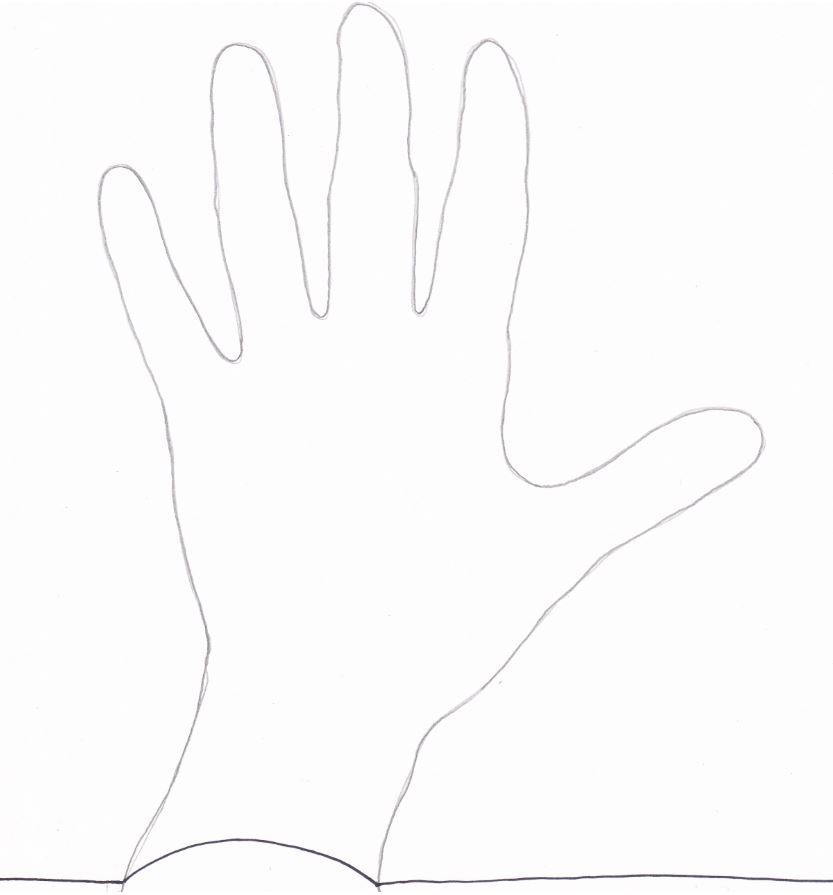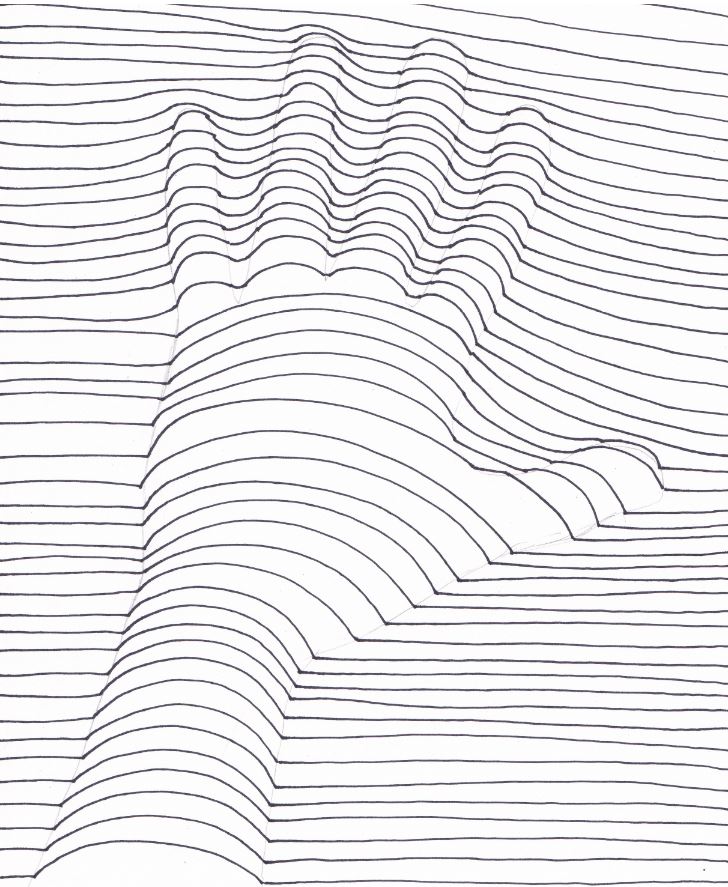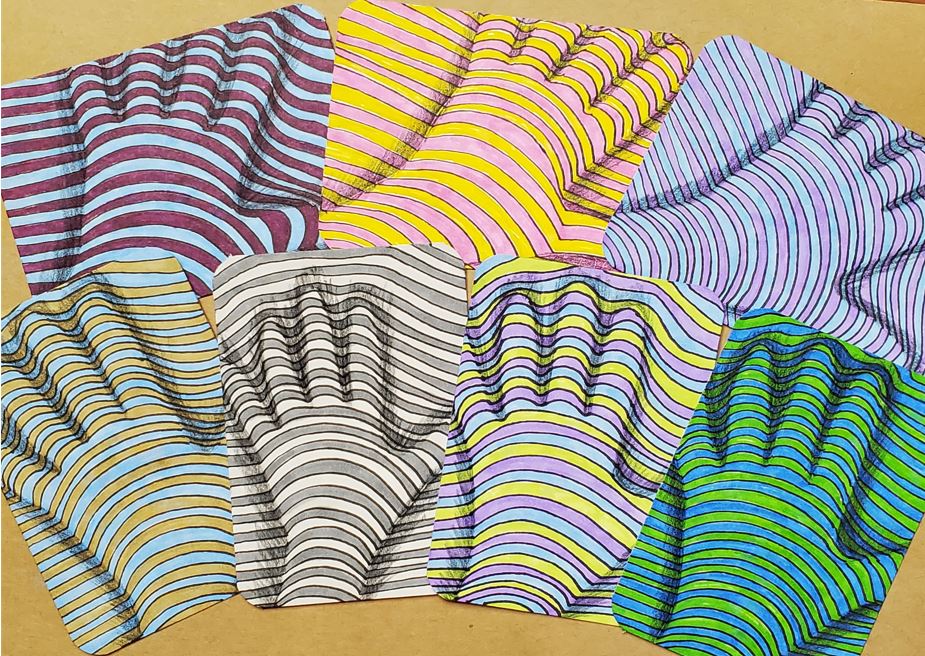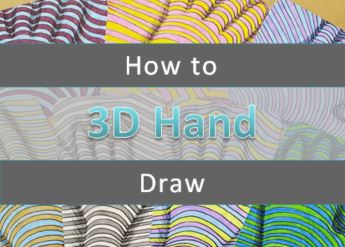How to Draw a 3D Hand
Today you’ll learn the 5 simple steps that will teach you how to make a 3D hand drawing. This project is a fun way to start learning to make Optical Art (Op Art). And the result is a cool looking optical illusion that gives the impression that the hand is popping off the paper. And drawing op art hands is super fun and easy.
But the best part about it is that it is really easy to do. I mean what can be easier than tracing your hand!
Once you’ve learned the technique to creating this type of optical illusion, you can apply it to any subject. You won’t be limited to just drawing hands.
History of Op Art
Optical Art, better known as Op Art, is an abstract style of art that creates an optical illusion. The art movement became popular in the 1960’s by Bridget Riley and Victor Vasarely. They used patterns and colors to disorient the viewer.
Vasarely is often referred to as the grandfather of the op art movement. In the 1930’s he started out as a graphic designer, after leaving medical school. In he 1940’s he experimented with surrealism and abstract expressionism. The earliest example of op art is “Zebra” (1937).
His goal was to create a universal language through art. This was done through op art, a geometric abstraction.
* Some of the links in this post may be affiliate links. This means I receive small commissions for purchases made through these links at no extra cost to you.
Art Supplies
- Paper or cardstock
- Pencil
- Kneaded eraser
- Colored pencils or Markers
- Thin black marker
3 Simple Steps to Creating Better Art (freebie)
How to Draw a 3D Optical Illusion of Your Hand
Step 1 – Trace Your Hand
Lightly trace your hand using a pencil. You do not want the original outline of your hand to show when finished so trace as lightly as possible. When you are tracing around your fingers make sure you are not making them too thin.
If your fingers are too thin it will make it more difficult to add your lines in the next step. This is a common struggle when tracing hands. Keep your pencil straight up and down to get a better tracing of your hand.

You could also make a template of your hand and shrink it down for smaller drawings. There are examples of this towards the end of the post.
Step 2 – Curved Lines
Begin adding your lines with a thin black sharpie or other type of thin marker. It seems to be easiest to start at the bottom of the page. Begin where your arm is and draw a curved line on the arm and then straight lines for the background.
It may be easier to start by using a pencil for the first four or five lines until you get the hang of it, then using the marker to add the rest. But if you feel confidant go ahead and use the black marker right from the start.

Tips:
- Make sure your straight lines for the background meet where the curved lines of the arm and hands are
- Do not trace your outline of your hand and arm with the black marker
- If there is too much space between your lines it will not look like the hand is popping off the page. Be sure to place your lines fairly close together
3D Hand Drawing Optical Illusion
Step 3 – Curved Lines
Continue adding lines and moving up the paper towards the top of the page. When doing the fingers I found it was easier to curve your lines in the opposite direction instead of trying to add straight lines there.
If you look at the example below, the lines in the fingers curve up and the lines in between the fingers curve down.

Step 4 – Finishing the Optical Illusion
The most difficult part of this project is ending the fingers. It’s a bit of a struggle to find a way to get back to straight lines at the top once you get past the finger tips.
You don’t want the curves at the top of the page to exactly match the curves on and around your fingers. Try to flatten out your lines as much as possible so it won’t look like your fingers continue past the point where they should end.

3D Hand Drawing & Color Theory
Before adding color to your optical art 3d hand drawing, you need to decide on a color scheme. Or if you even want to use a color scheme at all for that matter.
This is an easy project to practice using color theory. It’s good to get into the habit of using color schemes in your artwork. Even when it’s not a critical part of the final drawing.
Some good options for this op art hand projects are:
- Warm Colors
- Cool Colors
- Analogous Colors
- Monochromatic Colors
Monochromatic 3D Hand Drawing
Step 5 – Add Color
Choose three colors, using a color scheme, and color between your black lines with colored pencils. A monochromatic color scheme was used for this example.
Use a pattern with your colors when filling in your op art hand. This was done by using the darkest blue, the middle blue, and the light blue. Then repeating that pattern of colors.
Gradating colors will help your hand pop off the page. Apply your color darker at the edges of your fingers and hand. And make your colors lighter at the highest point of your hand drawing.
You can use a kneaded eraser to lift some of the color off the ridges of the fingers, hand, and arm.

Op Art Hand Drawings Ideas
Don’t be afraid to experiment and try out some different ideas. You can try various color combinations, change up the placement of your hand on the paper, or anything else you want to try doing.
Artist Trading Cards (ATCs) are a great way to save time and get more drawings done in less time. This makes it so much easier to try new things. Below are some drawings made on ATCs with markers, and then a black colored pencil was used to add some shading around the edges.

3D Hand Drawing (Op Art Tutorial)
I hope you enjoyed this op art tutorial for 3D hand drawings. These are fun to make and much easier than they look. They can be completed with markers, colored pencils, or simply using a graphite pencil.
Download our FREE Guide to Creating Better Art
Posts Related to Op Art Hands
- Color Theory for Artists
- 7 Easy Op Art Drawings Anyone Can Do
- Op Art Tubes
- 3D Stairs Optical Illusion



it didn’t work out for me
The most important things is to keep the lines in the background straight and the ones on the hand and fingers curved.
No it’s not the Background has to be freehand lines
it is wery well.thank you.
That is amazing!!
Thank you. Did you give it a try?
yes